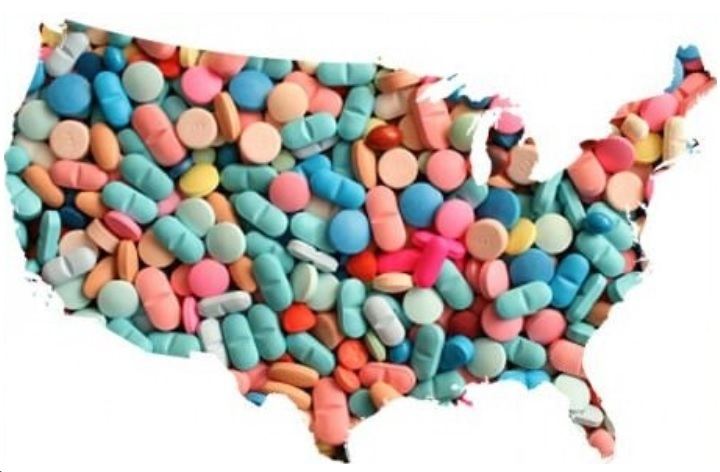
Comments by Brian Shilhavy
Editor, Health Impact News
Investigative reporter Jon Rappoport has published an excellent overview of the field of “psychiatry”, which many professionals, including many from the field of psychiatry itself, call “pseudo-science.” This is a topic I have covered for over a decade, and you will literally find hundreds of articles on this topic if you search Health Impact News.
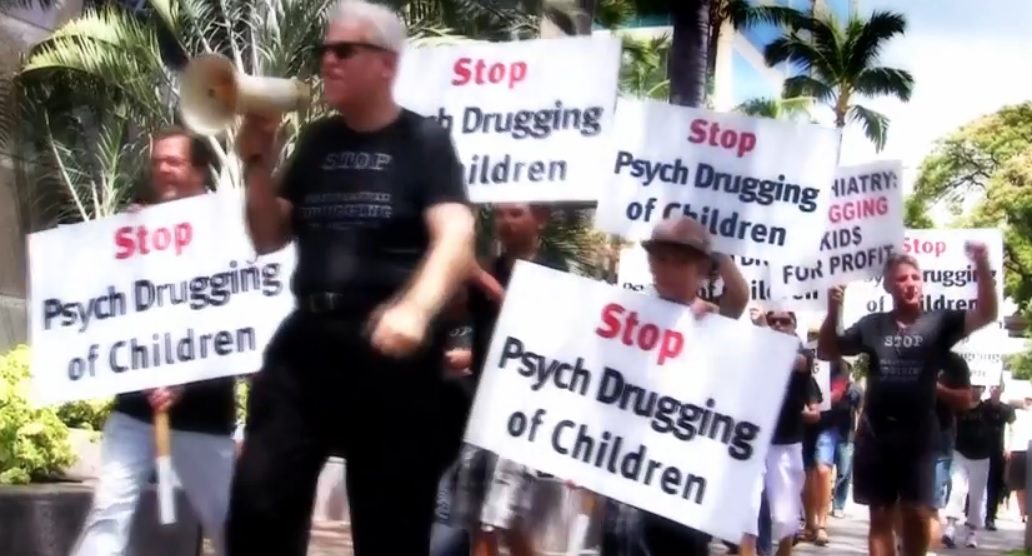
This article by Rappoport is not exhaustive, as he himself admits. He does not cover the fact that millions of babies and toddlers between the ages of 0 to 5, for example, are also on psych drugs.
The psychiatry watchdog group, The Citizens Commission on Human Rights (CCHR), reported that the number of children 0-5 on psychiatric drugs increased 42% between 2009 and 2012, with 1,085,410 children aged 0-5 on psychiatric drugs, and that was 10 years ago!
Also not addressed in this article is the fact that more active duty military personnel die due to suicide, than are killed in active combat, and in 2013 Richard Friedman, writing for the N.Y. Times, reported that this followed a 700 percent increase in prescribing psych drugs to active duty military. (Link.)
But this is an excellent article exposing just how fraudulent the field of psychiatry is, with literally NO basis in science.
In terms of whistleblowers and others who have exposed this fraud, I would add Dr. Irving Kirsch at Harvard, who conclusively proved that psych drugs were no better than placebos, and that any alleged relief people claim to get from these dangerous drugs, is based solely on their belief in the drug, not in any intrinsic value the drugs hold.
Here is a piece 60 Minutes did on his work more than 10 years ago from our Bitchute channel (it is hard to find on YouTube these days):
As has been the case through the years when we publish articles exposing the fraud in psych drugs, this will probably NOT be a popular article, as many readers who otherwise want to know about the corruption in Big Pharma and agree with us on other issues like vaccines, will get very defensive when we threaten the rationale for their coveted psych drugs that they believe they cannot live without.
Now this is what I’d call a Civil War
Against all Americans, regardless of political beliefs
The ‘mental health issues’ scam: a deep dive into the underlying crimes and the self-appointed “rulers of the mind”
Advisory[dot]com, December 14, 2016: “An estimated 40 million Americans take psychiatric drugs.”
In the wake of the FBI raid on Trump’s Mar-a-Lago, major media have been pushing and pushing the narrative that “extremist right-wing groups are calling for violence…Civil War…”
Well, here is a Civil War already in progress. It’s been going on for decades.
ONE:
A point before I dive into this grotesque subject. Suddenly withdrawing from psychiatric drugs can be dangerous and even life-threatening. Withdrawal needs to be conducted gradually by a professional who knows what he’s doing. See breggin.com for more information about this.
All right, here we go:
Society is now celebrating people who say they have mental health issues.
Athletes who “come forward” with their confessions are heroes.
So let me be clear. “Mental health issues” is a PRODUCT. It’s being sold like SUVs, cereal, beer, skin care lotions.
And just to give you an idea of how successful the sales campaign is, here is a staggering quote from NAMI, the National Alliance on Mental Illness, about a large survey of college students:
“The researchers also found that students are more willing to use university mental health services…By 2015, nearly 20 percent of those surveyed said they used these services…Moreover, nearly 75 percent said they would consider using university mental health services…”
These services are a gateway, a funnel into the diagnosis of a mental disorder…and then the prescription of drugs.
The drugs are the bottom line, the moneymaker.
The drugs CAUSE very real mental problems. There is no doubt that some of the people confessing their mental health issues these days are really talking about the effects of the drugs; but they don’t know it.
It’s also true that some students who claim to be “triggered” by words and ideas are actually reporting the effects of the drugs; but again, they don’t know that.
Promoting diabolically false science, psychiatry creates a gateway for defining many separate states of consciousness that don’t exist at all. They’re cheap myths, fairy tales.
It’s time to lay out the facts about psychiatry, to show how bankrupt this “science” really is.
The first question to ask is: do mental disorders have any scientific basis? There are now roughly 300 of them. They multiply like fruit flies.
An open secret has been bleeding out into public consciousness for the past ten years.
THERE ARE NO DEFINING LABORATORY TESTS FOR ANY SO-CALLED MENTAL DISORDER.
No blood tests, no urine tests, no saliva tests, no brain scans, no genetic assays.
And along with that:
ALL SO-CALLED MENTAL DISORDERS ARE CONCOCTED, NAMED, LABELED, DESCRIBED, AND CATEGORIZED by committees of psychiatrists, from menus of human behaviors.
Their findings are published in periodically updated editions of The Diagnostic and Statistical Manual of Mental Disorders (DSM), printed by the American Psychiatric Association.
For years, even psychiatrists have been blowing the whistle on this hazy crazy process of “research.”
Yes, people suffer. Yes, people have problems. Yes, they experience anguish and pain. For a wide variety of reasons. But this is FAR DIFFERENT from claiming the suffering can be separated into distinct labeled disorders which actually exist, can be diagnosed, and treated with a blizzard of psychiatric drugs.
Of course, pharmaceutical companies, who manufacture highly toxic drugs to treat every one of these “disorders,” are leading the charge to invent more and more mental-health categories, so they can sell more drugs and make more money.
In a PBS Frontline episode, Does ADHD Exist?, Dr. Russell Barkley, an eminent professor of psychiatry and neurology at the University of Massachusetts Medical Center, unintentionally spelled out the fraud.
PBS FRONTLINE INTERVIEWER: Skeptics say that there’s no biological marker—that it [ADHD] is the one condition out there where there is no blood test, and that no one knows what causes it.
BARKLEY: That’s tremendously naïve, and it shows a great deal of illiteracy about science and about the mental health professions. A disorder doesn’t have to have a blood test to be valid. If that were the case, all mental disorders would be invalid…There is no lab test for any mental disorder right now in our science. That doesn’t make them invalid.
Boom.
Oh, indeed, that DOES make them invalid. Utterly and completely. All 300 mental disorders. They’re all hoaxes. Because there are no defining tests of any kind to back up the diagnosis.
You can sway and tap dance and bloviate all you like and you won’t escape the noose. We are looking at a science that isn’t a science. It’s a fraud. A rank fraud.
There’s more. Under the radar, one of the great psychiatric stars, who has been out in front inventing mental disorders, went public. He blew the whistle on himself and his colleagues. And for years, almost no one noticed.
His name is Dr. Allen Frances, and he made VERY interesting statements to Gary Greenberg, author of a Wired article: “Inside the Battle to Define Mental Illness.” (Dec.27, 2010).
Major media never picked up on the interview in any serious way. It never became a scandal.
Dr. Allen Frances is the man who, in 1994, headed up the project to write the latest edition of the psychiatric bible, the DSM-IV. This tome defines and labels and describes every official mental disorder. The DSM-IV eventually listed 297 of them.
In an April 19, 1994, New York Times piece, “Scientist At Work,” Daniel Goleman called Frances “Perhaps the most powerful psychiatrist in America at the moment…”
Well, sure. If you’re sculpting the entire canon of diagnosable mental disorders for your colleagues, for insurers, for the government, for Pharma (who will sell the drugs matched up to the 297 DSM-IV diagnoses), you’re right up there in the pantheon.
Long after the DSM-IV had been put into print, Dr. Frances talked to Wired’s Greenberg and said the following:
“There is no definition of a mental disorder. It’s bullshit. I mean, you just can’t define it.”
BANG.
That’s on the order of the designer of the Hindenburg, looking at the burned rubble on the ground, remarking, “Well, I knew there would be a problem.”
After a suitable pause, Dr. Frances remarked to Greenberg, “These concepts [of distinct mental disorders] are virtually impossible to define precisely with bright lines at the borders.”
Frances might have been obliquely referring to the fact that his baby, the DSM-IV, had rearranged earlier definitions of ADHD and Bipolar to permit many MORE diagnoses, leading to a vast acceleration of drug-dosing with highly powerful and toxic compounds.
If this is medical science, a duck is a rocket ship.
To repeat, Dr. Frances’ work on the DSM IV allowed for MORE toxic drugs to be prescribed, because the definitions of Bipolar and ADHD were expanded to include more people.
Adverse effects of Valproate (given for a Bipolar diagnosis) include:
* acute, life-threatening, and even fatal liver toxicity
* life-threatening inflammation of the pancreas
* brain damage
Adverse effects of Lithium (also given for a Bipolar diagnosis) include:
* intercranial pressure leading to blindness
* peripheral circulatory collapse
* stupor and coma
Adverse effects of Risperdal (given for “Bipolar”) include:
* serious impairment of cognitive function
* fainting
* restless muscles in neck or face, tremors (may be indicative of motor brain damage)
Dr. Frances label-juggling act also permitted the definition of ADHD to expand, thereby opening the door for greater and greater use of Ritalin (and other similar amphetamine-like compounds) as the treatment of choice.
So…what about Ritalin?
In 1986, The International Journal of the Addictions published a most important literature review by Richard Scarnati. It was called “An Outline of Hazardous Side Effects of Ritalin (Methylphenidate)” [v.21(7), pp. 837-841].
Scarnati listed a large number of adverse effects of Ritalin and cited published journal articles which reported each of these symptoms.
For every one of the following (quoted verbatim) Ritalin effects, there is at least one confirming source in the medical literature:
* Paranoid delusions
* Paranoid psychosis
* Hypomanic and manic symptoms, amphetamine-like psychosis
* Activation of psychotic symptoms
* Toxic psychosis
* Visual hallucinations
* Auditory hallucinations
* Can surpass LSD in producing bizarre experiences
* Effects pathological thought processes
* Extreme withdrawal
* Terrified affect
* Started screaming
* Aggressiveness
* Insomnia
* Since Ritalin is considered an amphetamine-type drug, expect amphetamine-like effects
* Psychic dependence
* High-abuse potential DEA Schedule II Drug
* Decreased REM sleep
* When used with antidepressants one may see dangerous reactions including hypertension, seizures and hypothermia
* Convulsions
* Brain damage may be seen with amphetamine abuse
Let’s go deeper. In the US alone, there are at least 300,000 cases of motor brain damage incurred by people who have been prescribed so-called anti-psychotic drugs (aka “major tranquilizers”). Risperdal (mentioned above as a drug given to people diagnosed with Bipolar) is one of those major tranquilizers. (source: Toxic Psychiatry, Dr. Peter Breggin, St. Martin’s Press, 1991)
This psychiatric drug plague is accelerating across the land.
Where are the mainstream reporters and editors and newspapers and TV anchors who should be breaking this story and mercilessly hammering on it week after week? They are in harness.
Let’s take a little trip back in time and review one psychiatric drug, Prozac.
Prozac, in fact, endured a rocky road in the press for a while. Stories on it rarely appear now. The major media have backed off. But on February 7th, 1991, Amy Marcus’ Wall Street Journal article on the drug carried the headline, “Murder Trials Introduce Prozac Defense.”
She wrote, “A spate of murder trials in which defendants claim they became violent when they took the antidepressant Prozac are imposing new problems for the drug’s maker, Eli Lilly and Co.”
Also on February 7, 1991, the New York Times ran a Prozac piece headlined, “Suicidal Behavior Tied Again to Drug: Does Antidepressant Prompt Violence?”
In his landmark book, Toxic Psychiatry, Dr. Peter Breggin mentions that the Donahue show (Feb. 28, 1991) “put together a group of individuals who had become compulsively self-destructive and murderous after taking Prozac and the clamorous telephone and audience response confirmed the problem.”
A shocking review-study published in The Journal of Nervous and Mental Diseases (1996, v.184, no.2), written by Rhoda L. Fisher and Seymour Fisher, titlled “Antidepressants for Children,” concludes:
“Despite unanimous literature of double-blind studies indicating that antidepressants are no more effective than placebos in treating depression in children and adolescents, such medications continue to be in wide use.”
A study from the September 1989 Journal of Clinical Psychiatry, by Joseph Lipiniski, Jr., indicates that in five examined cases people on Prozac developed what is called akathesia. Symptoms include intense anxiety, inability to sleep, the “jerking of extremities,” and “bicycling in bed or just turning around and around.” Dr. Breggin comments that akathesia “may also contribute to the drug’s tendency to cause self-destructive or violent tendencies … Akathesia can become the equivalent of biochemical torture and could possibly tip someone over the edge into self-destructive or violent behavior … The June 1990 Health Newsletter, produced by the Public Citizen Research Group, reports, ‘Akathesia, or symptoms of restlessness, constant pacing, and purposeless movements of the feet and legs, may occur in 10-25 percent of patients on Prozac.’”
Other studies:
“Emergence of self-destructive phenomena in children and adolescents during fluoxetine [Prozac] treatment,” published in the Journal of the American Academy of Child and Adolescent Psychiatry (1991, vol.30), written by RA King, RA Riddle, et al. It reports self-destructive phenomena in 14% (6/42) of children and adolescents (10-17 years old) who had treatment with fluoxetine (Prozac) for obsessive-compulsive disorder.
July, 1991. Journal of Child and Adolescent Psychiatry. Hisako Koizumi, MD, describes a thirteen-year-old boy who was on Prozac: “full of energy,” “hyperactive,” “clown-like.” All this devolved into sudden violent actions which were “totally unlike him.”
September, 1991. The Journal of the American Academy of Child and Adolescent Psychiatry. Author Laurence Jerome reports the case of a ten-year old who moves with his family to a new location. Becoming depressed, the boy is put on Prozac by a doctor. The boy is then “hyperactive, agitated … irritable.” He makes a “somewhat grandiose assessment of his own abilities.” Then he calls a stranger on the phone and says he is going to kill him. The Prozac is stopped, and the symptoms disappear.
In his breakthrough book, Toxic Psychiatry, Dr. Peter Breggin discusses the subject of drug combinations: “Combining antidepressants [e.g., Prozac, Luvox, Paxil] and psychostimulants [e.g., Ritalin] increases the risk of cardiovascular catastrophe, seizures, sedation, euphoria, and psychosis. Withdrawal from the combination can cause a severe reaction that includes confusion, emotional instability, agitation, and aggression.”
Note: Prozac is one of the SSRI antidepressants. Others include Zoloft and Paxil. You would expect similar effects from all the SSRIs.
Here’s a coda:
This one is big.
The so-called “chemical-imbalance” theory of mental illness is dead.
Dr. Ronald Pies, the editor-in-chief emeritus of the Psychiatric Times, laid the theory to rest in the July 11, 2011, issue of the Times with this staggering admission:
“In truth, the ‘chemical imbalance’ notion was always a kind of urban legend — never a theory seriously propounded by well-informed psychiatrists.”
Boom.
Dead.
However…urban legend? No. For decades, the whole basis of psychiatric drug research, drug prescription, and drug sales has been: “We’re correcting a chemical imbalance in the brain; every mental disorder stems from such a chemical imbalance.”
The problem was, researchers had never been able to establish a normal baseline for chemical balance. So they were shooting in the dark. Worse, they were faking a theory. Pretending they knew something when they didn’t.
In his 2011 piece in Psychiatric Times, Dr. Pies tries to cover for his colleagues in the psychiatric profession with this fatuous remark:
“In the past 30 years, I don’t believe I have ever heard a knowledgeable, well-trained psychiatrist make such a preposterous claim [about chemical imbalance in the brain], except perhaps to mock it…the ‘chemical imbalance’ image has been vigorously promoted by some pharmaceutical companies, often to the detriment of our patients’ understanding.”
Absurd. First of all, many psychiatrists have explained and do explain to their patients that the drugs are there to correct a chemical imbalance.
And second, if all well-trained psychiatrists have known, all along, that the chemical-imbalance theory is a fraud…
…then why on earth have they been prescribing tons of drugs to their patients…
…since those drugs are developed on the false premise that they correct a chemical imbalance?
—The chemical-imbalance theory is a fake. There are no defining physical tests for any of the 300 so-called mental disorders. All diagnoses are based on arbitrary clusters or menus of human behavior. The drugs are harmful, dangerous, toxic. Some of them induce violence. Suicide, homicide. Some of the drugs cause brain damage.
Psychiatry is a pseudoscience.
It’s all gibberish, all the way down.
Meanwhile, the business model demands drugs for sale.
So even though the chemical-imbalance nonsense has been discredited, it will continue on as a dead man walking, a zombie.
Big Pharma isn’t going to back off. Trillions of dollars are at stake.
And now we have the vigorous selling of “mental health issues” as the latest thing in personal confessions.
A person is a hero if he says he has these issues. Media celebrate him.
You can expect schools to disastrously incorporate “education on mental health” to students, including very young children.
This burgeoning social trend masks the fact that it is actually being sold as a gateway into mental-disorder diagnoses and the prescription of highly dangerous drugs.
You want to fight for a right?
Fight for the right of every adult to refuse medication. Fight for the right of every parent to refuse medication for his/her child. Fight for the right of children to be free from indoctrination into “mental health.”
TWO:
Here is a staggering statistic from the National Alliance on Mental Illness (NAMI): “More than 25 percent of college students have been diagnosed or treated by a professional for a mental health condition within the past year.”
Let that sink in. 25 percent.
Colleges are basically clinics. Psychiatric centers.
Colleges have been taken over. A soft coup has occurred, out of view.
You want to know where all this victim-oriented “I’m triggered” and “I need a safe space” comes from? You just found it.
It’s a short step from being diagnosed with a mental disorder to adopting the role of being super-sensitive to “triggers.” You could call it a self-fulfilling prophecy. “If I have a mental disorder, then I’m a victim, and then what people say and do around me is going disturb me…and I’ll prove it.”
The dangerous and destabilizing effects of psychiatric drugs confirm this attitude. The drugs DO, in fact, produce an exaggerated and distorted sensitivity to a person’s environment.
You want to know where a certain amount of violent aggressive behavior on campuses comes from? You just found it. The psychiatric drugs. In particular, antidepressants and speed-type medications for ADHD.
You want to know why so many college students can’t focus on their studies? You just found one reason. The brain effects of the drugs.
The usual variety of student problems are translated into pseudoscientific categories of “mental disorders”—and toxic drugging ensues.
A college student says to himself, “I’m having trouble with my courses. I don’t understand what my professors want. My reading level isn’t good enough. I don’t like the professors who have a political bias. I’m confused. I miss my friends back home. I feel like a stranger on campus. I’d like to date, but I don’t know where to start. There are groups on campus. Should I join one? Well, maybe I need help. I should go to the counseling center and talk to a psychologist. That’s what they’re there for. Maybe I have a problem I don’t know about…”
And so it begins.
The student is looking for an explanation of his problems. But this search will morph into: having a socially acceptable excuse for not doing well. Understand the distinction.
After a bit of counseling, the student is referred to a psychiatrist, who makes a diagnosis of depression, and prescribes a drug. Now the student says, “That’s a relief. Now I know why I have a problem. I have a mental disorder. I never knew that. I’m operating at a disadvantage. I’m a victim of a brain abnormality. Okay. That means I really shouldn’t be expected to succeed. Situations affect my mood. What people say affects my mood.”
And pretty soon, the whole idea of being triggered and needing a safe space makes sense to the student. He’s heading down a slippery slope, but he doesn’t grasp what’s actually going on. On top of that, the drug he’s taking is disrupting his thoughts and his brain activity. But of course, the psychiatrist tells him no, it’s not the drug, it’s the condition, the clinical depression, which is worsening and making it harder to think clearly. He needs a different drug. The student is now firmly in the system. He’s a patient. He’s expected to have trouble coping. And on and on it goes.
Here is the background. Here is what psychiatry is all about—
Wherever you see organized psychiatry operating, you see it trying to expand its domain and its dominance. The Hippocratic Oath to do no harm? Are you kidding?
THREE:
Here is a story Dr. Peter Breggin tells in his classic book, Toxic Psychiatry. It says it all:
“Roberta was a college student, getting good grades, mostly A’s, when she first became depressed and sought psychiatric help at the recommendation of her university health service. She was eighteen at the time, bright and well motivated, and a very good candidate for psychotherapy. She was going through a sophomore-year identity crisis about dating men, succeeding in school, and planning a future. She could have thrived with a sensitive therapist who had an awareness of women’s issues.
“Instead of moral support and insight, her doctor gave her Haldol. Over the next four years, six different physicians watched her deteriorate neurologically without warning her or her family about tardive dyskinesia [motor brain damage] and without making the [tardive dyskinesia] diagnosis, even when she was overtly twitching in her arms and legs. Instead they switched her from one neuroleptic [anti-psychotic drug] to another, including Navane, Stelazine, and Thorazine. Eventually a rehabilitation therapist became concerned enough to send her to a general physician, who made the diagnosis [of medical drug damage]. By then she was permanently physically disabled, with a loss of 30 percent of her IQ.
“…my medical evaluation described her condition: Roberta is a grossly disfigured and severely disabled human being who can no longer control her body. She suffers from extreme writhing movements and spasms involving the face, head, neck, shoulders, limbs, extremities, torso, and back—nearly the entire body. She had difficulty standing, sitting, or lying down, and the difficulties worsen as she attempts to carry out voluntary actions. At one point she could not prevent her head from banging against nearby furniture. She could hold a cup to her lip only with great difficulty. Even her respiratory movements are seriously afflicted so that her speech comes out in grunts and gasps amid spasms of her respiratory muscles…Roberta may improve somewhat after several months off the neuroleptic drugs, but she will never again have anything remotely resembling a normal life.”
FOUR:
As I mentioned above, 25% of college students in America have received a diagnosis of a mental disorder, or are on psychiatric drugs. I emphasize this to indicate how widespread psychiatric control has become.
That statistic has been reported by NAMI, the National Alliance on Mental Illness.
NAMI also states: “Approximately 1 in 5 adults in the U.S.—43.8 million, or 18.5%—experiences mental illness in a given year.”
These figures are earthshaking. They reflect a relentless push, by organized psychiatry and their pharmaceutical partners, to expand the diagnoses of mental disorders and the toxic drugging that follows.
Here is what we’re dealing with: the profession of psychiatry has been given the government seal of approval to monopolize the field of mental health. The nature of their psychiatric work marks these “professionals” as some of the craziest people on the planet.
How do psychiatrists get away with it? They have journals. They populate schools and hospitals. They testify in criminal trials. They are funded and backed by some of the most powerful corporations in the world: Big Pharma. They’re medical doctors, and the public is trained to believe them.
Worst of all, the psychiatrists believe themselves.
They’re indoctrinated through years of schooling.
They’re in a waking trance.
They’re men and women who would never sacrifice their exalted positions of authority and their money for the sake of the truth.
What about parents and their children? “Jimmy, we’re so happy you’re going to college. Now, there is a 25% chance you’ll be diagnosed with a mental disorder while you’re there. That’s a good thing. You’ll get help. Listen to the doctor. Take the drugs.”
Of course, parents don’t say that. But by default, and through ignorance, that’s what they’re setting up their children for.
“This college you’re attending, Jimmy—it’s basically a psychiatric clinic. But you’ll also learn valuable academic information on the side.”
There’s more. Much more. But I’ll leave it there for now…
Read the full article here.

See Also:
Understand the Times We are Currently Living Through
Exposing the Christian Zionism Cult
Jesus Would be Labeled as “Antisemitic” Today Because He Attacked the Jews and Warned His Followers About Their Evil Ways
Insider Exposes Freemasonry as the World’s Oldest Secret Religion and the Luciferian Plans for The New World Order

Identifying the Luciferian Globalists Implementing the New World Order – Who are the “Jews”?
Who are the Children of Abraham?
The Brain Myth: Your Intellect and Thoughts Originate in Your Heart, Not Your Brain
Fact Check: “Christianity” and the Christian Religion is NOT Found in the Bible – The Person Jesus Christ Is
Christian Myths: The Bible does NOT Teach that it is Required for Believers in Jesus to “Join a Church”
Exposing Christian Myths: The Bible does NOT Teach that Believers Should Always Obey the Government
Was the U.S. Constitution Written to Protect “We the People” or “We the Globalists”? Were the Founding Fathers Godly Men or Servants of Satan?
The Seal and Mark of God is Far More Important than the “Mark of the Beast” – Are You Prepared for What’s Coming?
The United States and The Beast: A look at Revelation in Light of Current Events Since 2020
The Satanic Roots to Modern Medicine – The Mark of the Beast?
Medicine: Idolatry in the Twenty First Century – 8-Year-Old Article More Relevant Today than the Day it was Written
Having problems receiving our emails? See:
How to Beat Internet Censorship and Create Your Own Newsfeed
We Are Now on Telegram. Video channels at Bitchute, and Odysee.
If our website is seized and shut down, find us on Telegram, as well as Bitchute and Odysee for further instructions about where to find us.
If you use the TOR Onion browser, here are the links and corresponding URLs to use in the TOR browser to find us on the Dark Web: Health Impact News, Vaccine Impact, Medical Kidnap, Created4Health, CoconutOil.com.





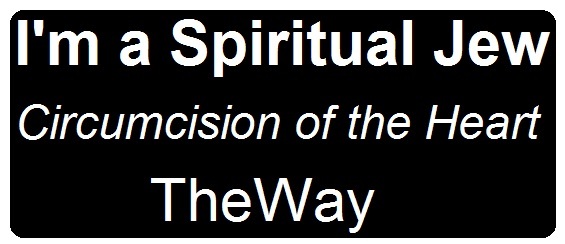




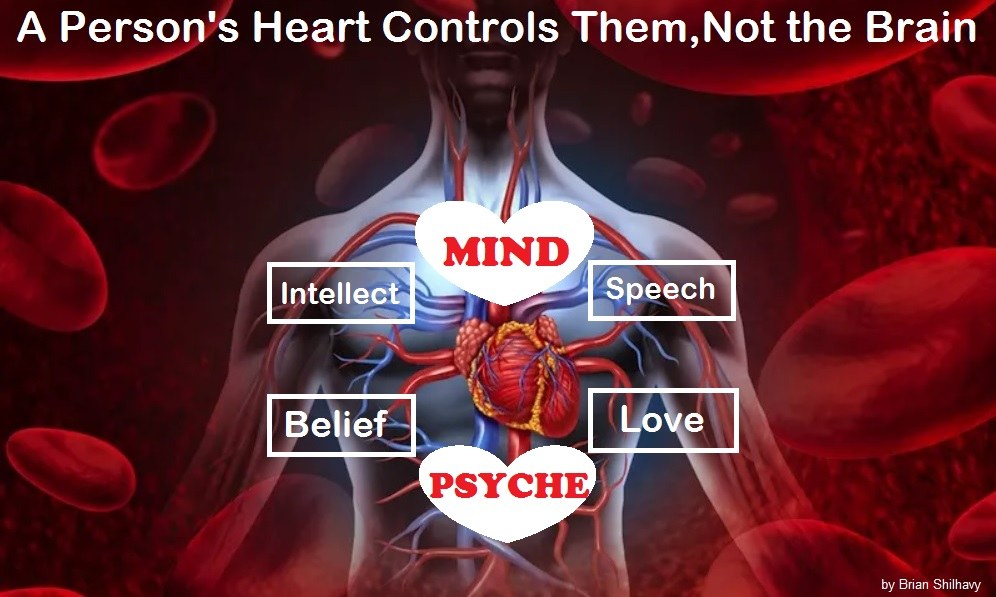





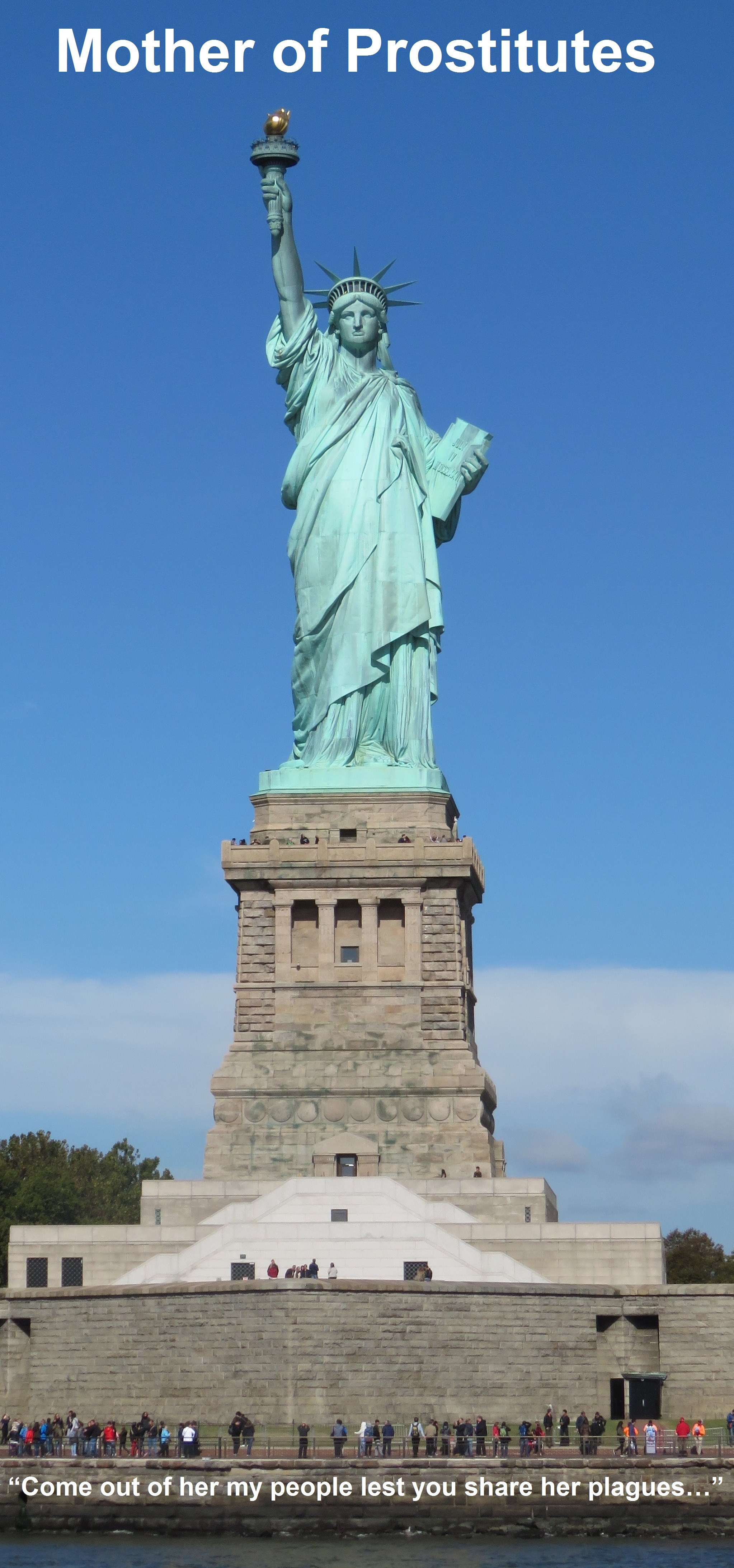

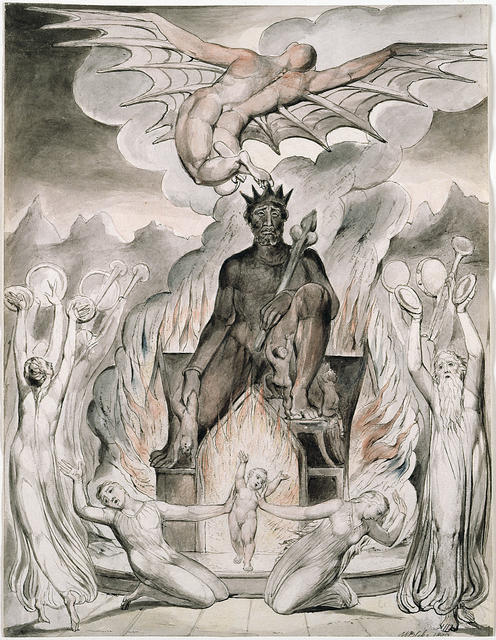


4 Comments